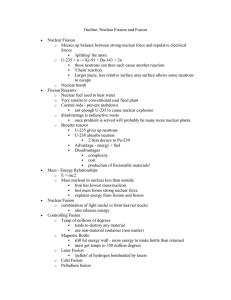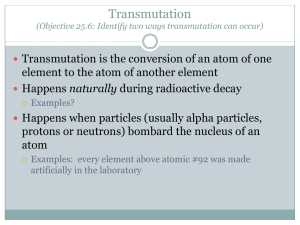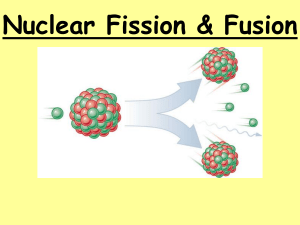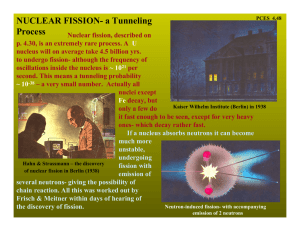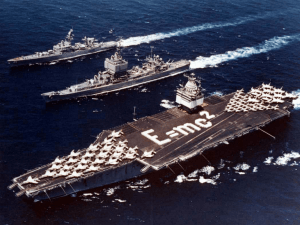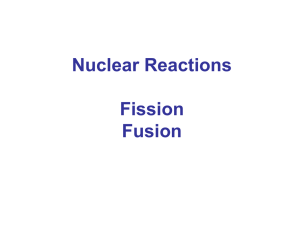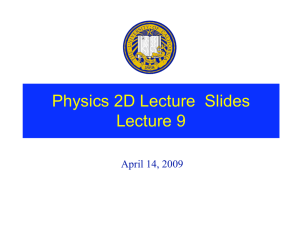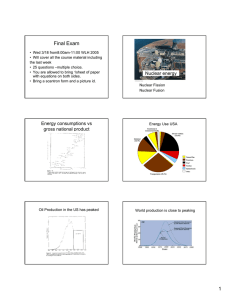nuclear fission and fusion
advertisement
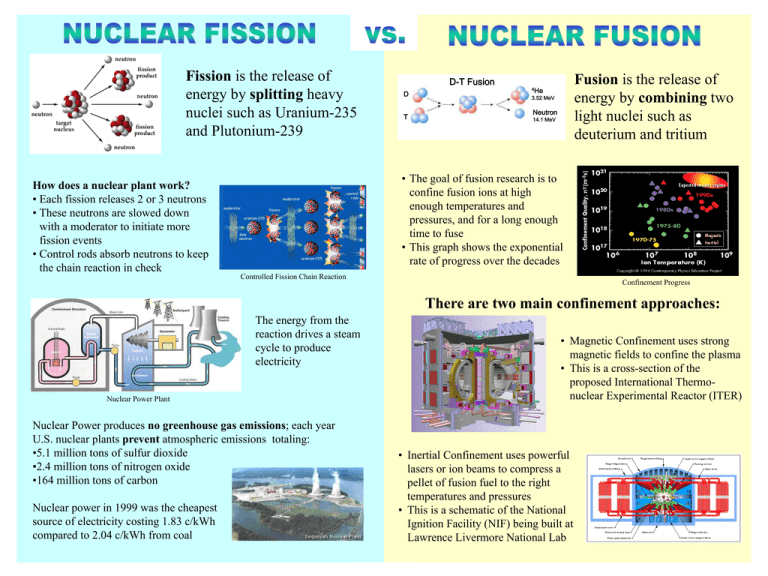
Fission is the release of energy by splitting heavy nuclei such as Uranium-235 and Plutonium-239 D-T Fusion D T Fusion is the release of energy by combining two light nuclei such as deuterium and tritium 4He 3.52 MeV Neutron 14.1 MeV • The goal of fusion research is to confine fusion ions at high enough temperatures and pressures, and for a long enough time to fuse • This graph shows the exponential rate of progress over the decades How does a nuclear plant work? • Each fission releases 2 or 3 neutrons • These neutrons are slowed down with a moderator to initiate more fission events • Control rods absorb neutrons to keep the chain reaction in check Controlled Fission Chain Reaction Confinement Progress There are two main confinement approaches: The energy from the reaction drives a steam cycle to produce electricity Nuclear Power Plant Nuclear Power produces no greenhouse gas emissions; each year U.S. nuclear plants prevent atmospheric emissions totaling: •5.1 million tons of sulfur dioxide •2.4 million tons of nitrogen oxide •164 million tons of carbon Nuclear power in 1999 was the cheapest source of electricity costing 1.83 c/kWh compared to 2.04 c/kWh from coal • Magnetic Confinement uses strong magnetic fields to confine the plasma • This is a cross-section of the proposed International Thermonuclear Experimental Reactor (ITER) • Inertial Confinement uses powerful lasers or ion beams to compress a pellet of fusion fuel to the right temperatures and pressures • This is a schematic of the National Ignition Facility (NIF) being built at Lawrence Livermore National Lab
